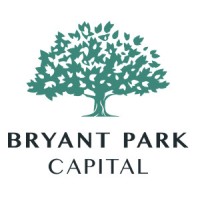The panel discussion consisted of Jacob Malherbe, CEO of X Social Media, Sara Papantonio, Partner at Levin Papantonio Rafferty, and Ryan Stephen, Managing Partner of Pine Valley Capital Partners. The panel was moderated by Steve Nober, CEO of Consumer Attorney Marketing Group (CAMG),
The discussion spanned the following topics:
- Who’s doing what in mass torts? How about funding?
- How funders are evaluating and working with firms
- Examples of the ABS framework in action & challenges
- Pre- and post-settlement funding and time to disbursement
The conversation began around the integration of litigation funders into the mass torts sector. There are a lot of variables to consider around mass torts which typically don’t exist in other case types. These include marketing ethics, use of proceeds, claimant access and relationship building, where the call center is located, firm operations at an administrative level, etc. These are all aspects of a law firm that litigation funders need to understand if they are going to partner with a mass torts law firm. The degree of diligence is vast, and will require a years-long commitment. What’s more, there is now a focus on unethical marketing practices, with Congress taking a look at the tactics being used. The question for funders is, how can you protect yourself from unethical marketing efforts (funders might be named in a suit against the law firm). Funders need to mitigate these risks by asking more questions at the outset: What kind of advertising is being used, where are the clients coming from, how do I know that the clients are real (ad tracking)? Too many funders are pouring money into this lucrative space, and run the risk of encountering scammers who set up a business looking to raise money for a mass torts claim, when they have no ability to secure claimants or conduct the proper marketing outreach. What this comes down to at its core is relationships—understanding and knowing who you’re working with. Funders need to feel that the law firm they partner with us trustworthy, but of course should still conduct their own diligence to verify that all activities are on the up and up. On this last point, the panel recommends creating more nuanced tracking—not just ‘cost per case.’ Track advertising costs, medical records, other marketing materials. Really understand how money is moving at a granular level. The discussion then pivoted over to the Camp Lejeune case. Sara Papantonio feels that there will be one more opportunity to make a push for cases when payouts start happening. The question is, will there be enough time to advertise and file a claim before the statute of limitations runs out? Papantonio also noted that many clients won’t qualify for the elective option, and those that do probably won’t take it because of how undervalued it is. So likely, we will see more cases move into litigation. Values are starting to be presented for Tier 1 and Tier 2 injuries, which will help push this into litigation as well. She believes around May of 2024 will be an opportunity to advertise, but the statute of limitations runs out in August. Papantonio explained that Tier 1 injuries are far less risk for funders and litigators. Tier 2s and Tier 3s will have to move through a process, and some won’t be approved, so there is more risk there. Papantonio also believes the fees will be capped at 20-25%, which was the DOJs recommendation. So funders and law firms should plan for that. One final point Papantonio made, was that these mega mass torts are sucking up all the oxygen in the space, but there are plenty of smaller torts that are very meritorious and present opportunities for funders and law firms. The panel concurred, given that $1 billion has spent on Camp Lejeune already, so any new entrants into that claim are coming in late stage. Panelists Ryan Stephen and Jacob Malherbe added that torts such as Tylenol, Roundup part two, paraquat, PFAS claim (which the panel believes might become the biggest case ever), anti-terrorism cases, and others. Malherbe even recommended ‘The Devil We Know,’ a documentary on Netflix about the PFAS claim—so anyone interested can follow up with some binge watching!




